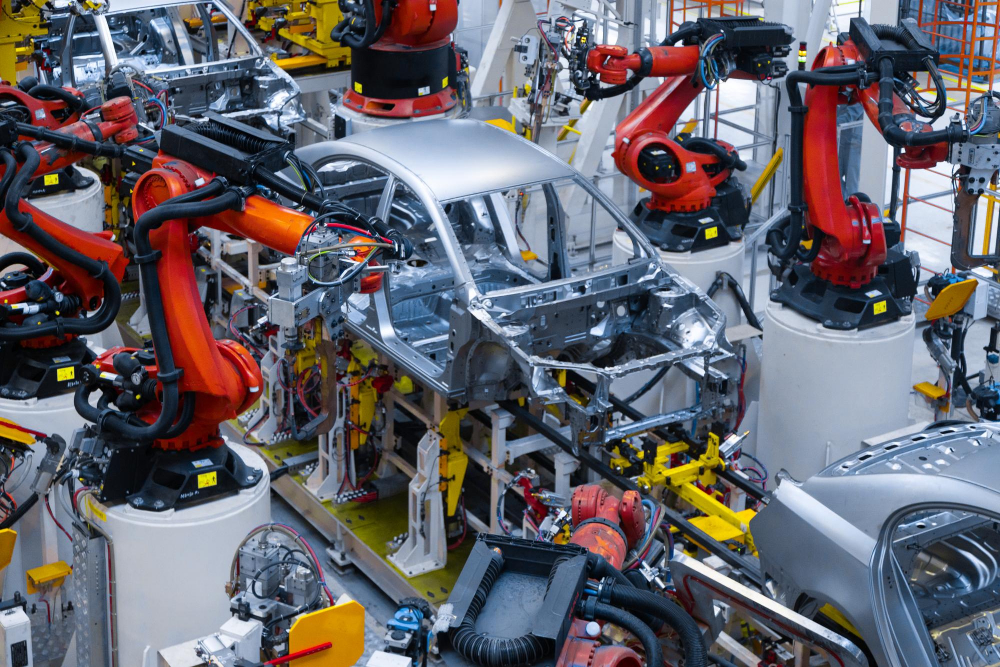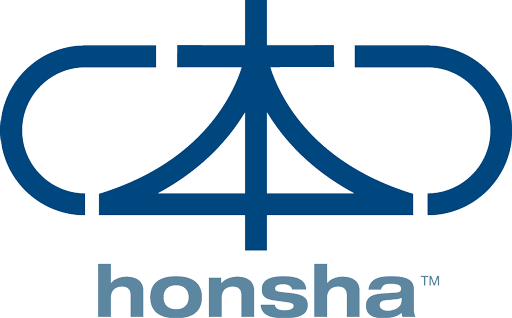
Embarking on a journey of operational excellence can often start with the pursuit of Lean Tools, having one's eye set on a desired 'winning result'. Yet behind what we identify today as the tools of Lean (its methodologies, techniques and practices) lies a deeply rooted system, the Toyota Production System (TPS), which orchestrates these methodologies and techniques into a unified whole.
In the following lines, we'll explore the rationale for transitioning from a surface-level Lean Tools mentality to a more profound TPS mindset. Through analogies, an anecdote, and perhaps a few insights, my intention is to present to you a depiction of Lean beyond its 'tools', revealing the interconnectedness of a synergistic system, proven globally to drive both operational and organizational excellence.
The term LEAN
During some of the coaching sessions that I facilitate as a Lean consultant with Honsha.ORG, and especially when initiating with a new team, I sometimes pose the question: "Is LEAN an acronym? What does it stand for?"
It's interesting to see people's eyes wander as they try to remember and quickly articulate the answer. This is an intentional 'trick question', of course, since LEAN is not an acronym. If you're familiar with its origin, the term "Lean Production" for describing the uniqueness of Toyota's Production System (TPS) was coined by researchers Womack, Jones, and Roos in their book *The Machine that Changed the World, in 1990. Since then, the term "Lean" has become synonymous with the principles, practices, and techniques of TPS, adopted by organizations worldwide, across various industries and sectors.
What we commonly don't see
Many people, in my experience, find the methodologies and techniques of Lean both appealing and engaging when first becoming exposed to them through various medium or, better yet, while being present in organizations that display evidence of the successful application of such methodologies and practices. The potential 'downside', I believe, of witnessing first-hand a true Lean environment or practice, is that one can fail to see (and grasp) what is not "evident".
This reminds me of a tree analogy sometimes used to describe a Lean organization, where the branches, fruits, and overall health of the tree can be easily noticed, while the root system and nourishment process that keeps it upright and strong would typically not be noticeable.
The tools mentality
Parting from this analogy, the leaves and branches can perhaps be comparable to the 'Lean Tools' (techniques) of the organization; actively contributing to the livelihood and growth of the tree.
It's not uncommon for 'tools' to be what one may associate with good results in successful Lean organizations, since that's what's most evident. Yet, as a consequence of this association, the mentality of the initiating Lean practitioner can frequently be: "We need Lean Tools, to obtain results similar to those of successful Lean organizations".
I would sustain that this Lean Tools mentality is not wrong; however it is incomplete, since it loses sight of what is not typically "evident" in a Lean organization: The SYSTEM, that provides both a solid base-structure (analogous with the tree's roots) as well as "nourishment" in the form of purpose, guiding principles, values, and shared expectations.
It's been my experience that, during the initial phases of a company's Lean journey, if one or more aspects of the Lean deployment fail to take hold, a common conclusion among those leading the effort can be: "Lean Tools do not work in our organization; mainly because we are different (meaning size, purpose, industry, market…) from others who are currently achieving operational excellence through Lean".
The reality
Interestingly, concluding that "Lean Tools don't work for us" is not something infrequent within organizations embarking on a Lean journey, and I would make the case that the people taking on the responsibility of deploying Lean are in fact partially right. Why? Because in fact: Lean Tools do not work (and were not meant to work) …in isolation.
A 'tools mentality', as a way of thinking or frame of mind, considers that if you have nails and screws to work with (for example), you should have and use the best tools available for each job at hand. This approach is straightforward and logical when you have individual tasks that can be performed in isolation. However, the broad-reaching nature and scope of a serious Lean implementation requires a very different mindset.
The mindset that produced the tools
What we recognize today as Lean Tools, such as 5S, Kanban, SMED, Visual Management, TPM, Kaizen Teian, Standardized Work and many others, are a series of methodologies and techniques that Toyota painstakingly trialed, refined and integrated over the course of more than three decades, to form a synergistic SYSTEM: The Toyota Production System.
Personally, I like to use the analogy of a high-performance vehicle when describing a TPS/Lean system. Perhaps you'll find this interesting.
Think of a vehicle used for professional, competitive racing (maybe a formula1 car, a rally truck, a superbike, etc.).
There are so many elements that contribute to the success of a high-performance vehicle: You have hydraulic elements, mechanical components, pneumatic, electrical, structural, aerodynamic, digital, power train elements, and many more. All working together simultaneously, synergistically, with the purpose of achieving a winning result.
Depending on the changing moments during a race, some elements may temporarily serve a more critical role than others; yet the vehicle could not 'win the competition' if it did not have all of them contributing systematically.
Unexplainable?
This brings to mind a unique experience I encountered some years ago, with a steel industry client of Honsha in central Mexico. The plant manager we were supporting during a full-scale Lean rollout received a call from his regional director; this was during the eighth month of this plant's Lean journey.
The director called to find out what was happening at this site. The financials they were seeing at corporate headquarters showed an unprecedented 20% reduction in the plant's operational cost, per ton of steel produced. Honsha was on site at the time of this call.
The regional director's question was very simple: "These are the results we're seeing. What did you do?" The plant manager's answer was even simpler (and quite unexpected): "I don't know" replied the plant manager. He proceeded to clarify, after an uncomfortable silence on the line: "…I mean, I can tell you all of what we've been doing differently: We've introduced visual management and daily huddles in Production and Shipping, we have introduced 5S in key areas, we are now doing quick changeovers (SMED) in our bottleneck processes, our employees have started to implement their improvement proposals through Kaizen Teian both on the shopfloor and in administrative areas, we are in the middle of three deep-dive PDCA problem-solving projects, and there are more things in the works. But, if your question is 'what is the one thing we've done?' I honestly could not say".
The above speaks to the amazing (and occasionally unexplainable) synergy that is created by the elements of a TPS/Lean system (the methodologies and techniques) when these are integrated to the day-to-day workings of an organization, regardless of its size, industry or the type of activities it performs.
A personalized winning result
Because Lean has its origins in the Toyota Production System (TPS), you may see how the 'TPS mindset' requires that all TPS/Lean elements work together to provide a winning result. Yet, what that specific result may be, and which elements of TPS are needed in a particular Lean journey, will depend on each individual organization, its purpose, priorities and challenges.
In most organizations embarked on a serious Lean initiative, regardless of their uniqueness, one can typically identify one or more of the following objectives either directly or indirectly: To increase efficiency, to reduce cost, to increase productivity, to reduce lead time, to improve quality.
These, and many other objectives that Lean has proven to help achieve, are well documented as key performance indicators (KPI) in case studies and benchmarks from around the world, within industries ranging from manufacturing to healthcare, construction to hospitality, government to software development, and others. These indicators would be the equivalent of our 'winning result' in the high-performance vehicle analogy, and the purpose for approaching Lean as a synergistic system (the TPS mindset), rather than maintaining an isolated Lean Tools mentality.
Time to evolve?
The above then raises the question: How to know when (or if) your organization should consider evolving from a Lean Tools mentality to a TPS mindset? – Well, most likely, when (or if) your Lean initiative seems to be decelerating or no longer helping meet your purpose.
The TPS mindset
In conclusion, and referring back to our high-performance vehicle analogy; the system configuration that your organization may require could look more like a truck than a motorcycle or car, or perhaps something very different (like a speedboat), and that's truly all right; since the Lean system that you integrate to the day-to-day workings of your organization should be unique to your specific needs and challenges (precisely the TPS mindset). The important thing is that the Lean elements that you deploy (methodologies, techniques, practices) work together, supporting one another in a unified and systematic way, for the purpose of achieving your winning result.
Wishing you the best on your Lean journey.
Paco Estrada.
.
 Francisco (Paco) Estrada.
Francisco (Paco) Estrada.
With over 20 years of experience supporting the implementation of TPS/Lean methodologies in very diverse industries and as a senior associate of Honsha.ORG, alongside Toyota senseis, Paco has contributed to the Lean transformation of numerable organizations, in 11 countries.
.
* James P. Womack, Daniel T. Jones, Daniel Roos (1990) | The Machine That Changed the World | Simon & Schuster.




